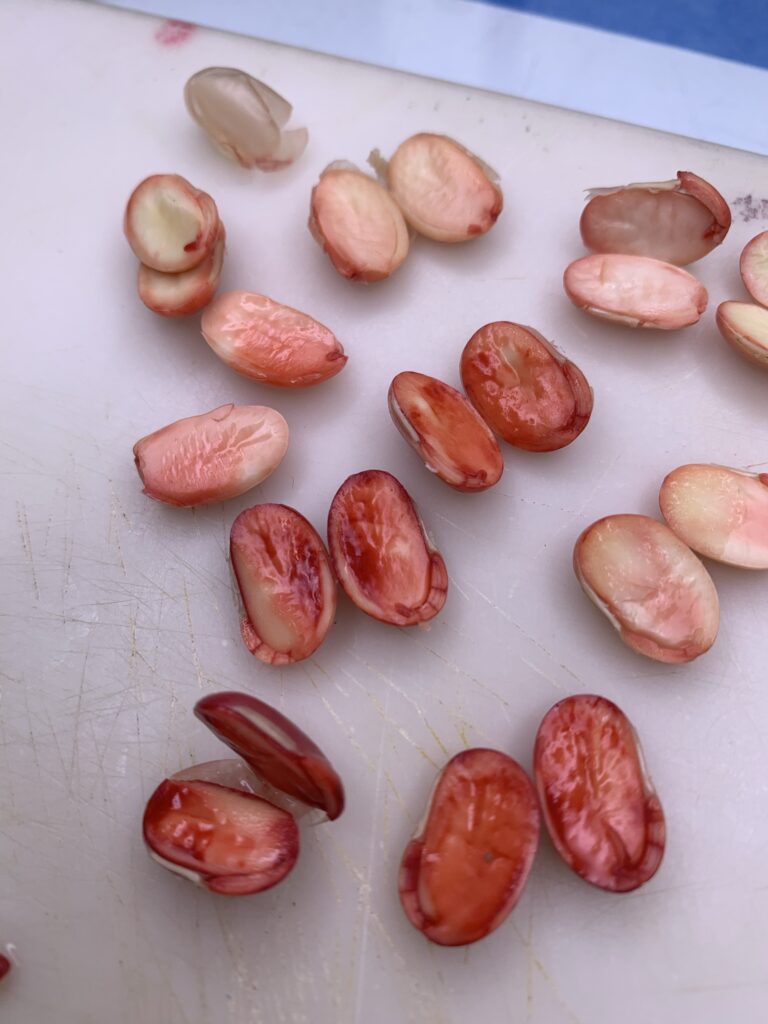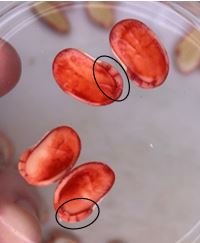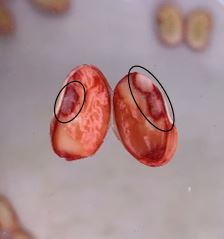
Tetrazolium Test (TZ Test) using Triphenyl Chloride
The TZ test is a quick, mostly 24-hour test used to estimate germination and seed lot vigor. Farmers will request this TZ test in conjunction with a germination test, theoretically both ending test results should be similar.
First the seeds are imbibed with water, then soaked in a solution of tetrazolium chloride. As the seeds start to respire, the tetrazolium chloride reacts, changing from a clear to red color. Depending on the type of crop, seeds are then cut and evaluated. Based on the staining patterns, seeds can be evaluated into vigor categories of high, medium, low, or dead seed.
The TZ test has proven very beneficial in determining mechanical damage in soybeans and sprouting in small grains. However, this test is available for all field crops.
The two pictures shown below are from a recent TZ Test completed in the same soybean lot. The seeds on the left shows multiple places where the radicles are broken. Damage to the radicle will reduce or eliminate the potential for the seedling to produce a normal root/plant. Broken radicles are more common when seed is harvested and/or handled with lower seed moistures (10% or lower). Improper harvest equipment settings (too much thrashing) can damage the seed. The Tetrazolium is also good at showing where frost injury occurs (shown below on right). Frost damage is out of our control. We cannot predict Mother Nature, sometimes she has a mind of her own.
If you were to do a germination test on this seed lot, you wouldn’t know the reasoning or backstory as to why that lot has such a lower germination percentage. The TZ test is very useful in identifying these causes. This sample had a TZ result of 87% with a high number of broken radicles and a germination of 86%.


